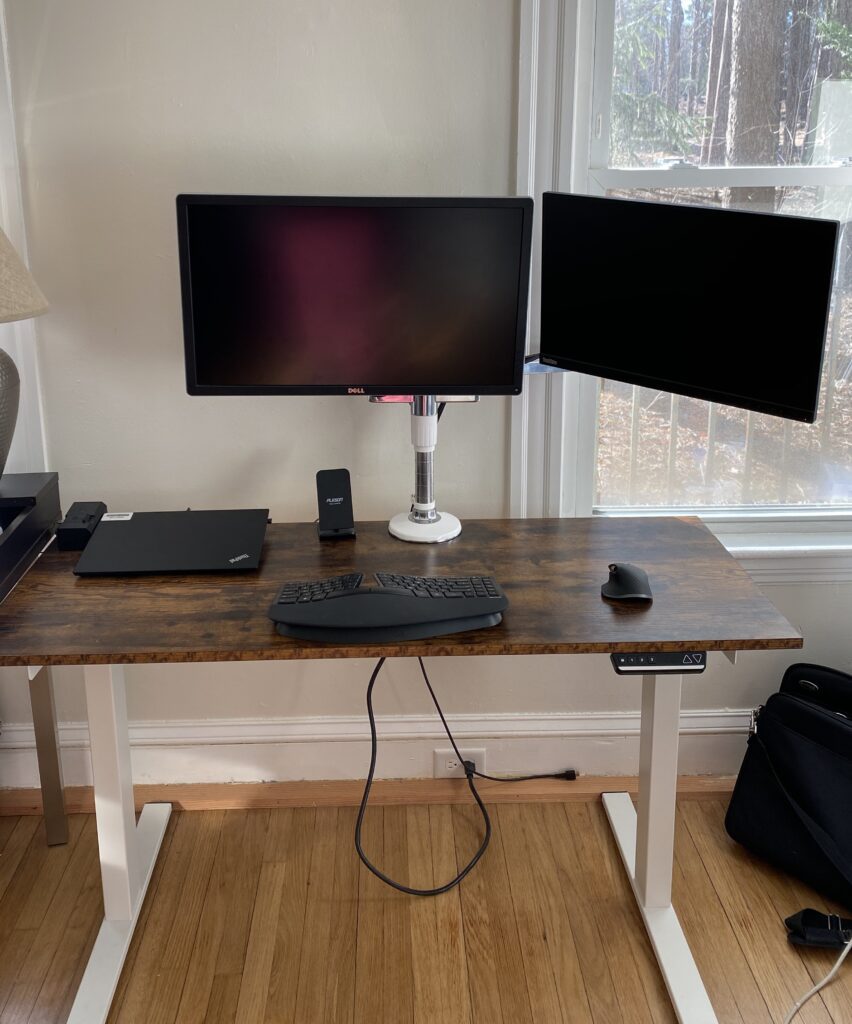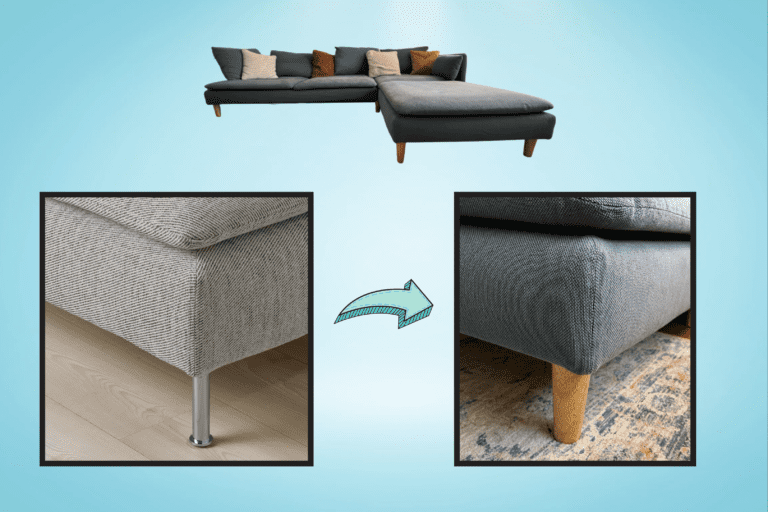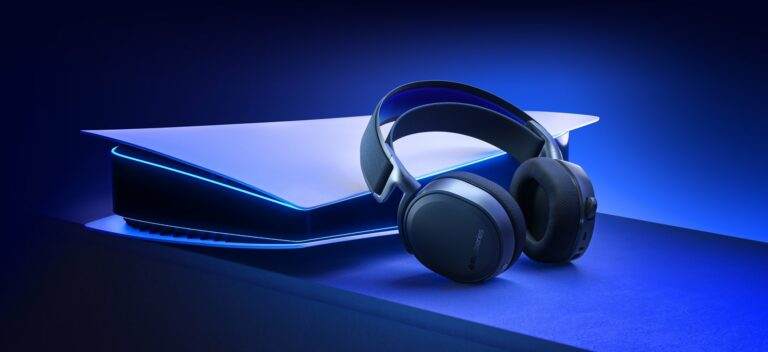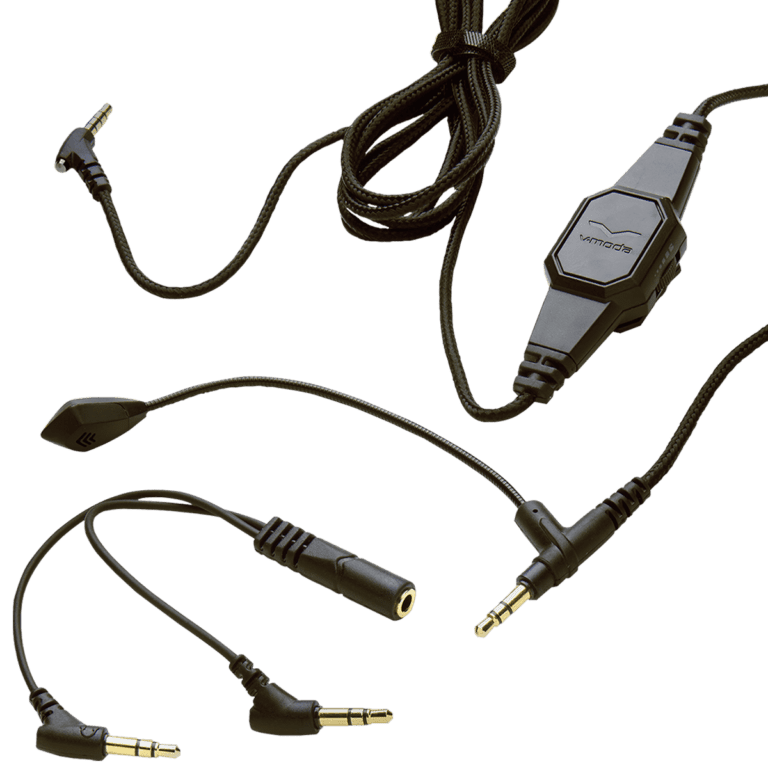How I saved some money with my cheap standing desk setup
If you buy something through our posts, we may get a small share of the sale. Click here for more information.
To go along with the post where I explained why I bought the best office chair possible at a low price, it only makes sense that I also explain my current standing desk. I did not go for a brand name with my desk, and two years after purchase I am quite happy with it! I want to explain some of my rationale here, and of course there is a big caveat with standing desks that I did not see brought up in reviews or the countless Youtube videos that I watched.
The decision to go with a standing desk ended up not being what I expected. I thought that I would be standing all the time, when in reality I use that function of the desk maybe 5% of the time. What can I say, I’m lazy. However, what I enjoy most about having a standup desk is the ability to dial in the perfect height for ergonomics. I find that most desks without adjustment aren’t quite right for me, and how could they be? If they are fixed height then that means it is only right for people of a specific height. There are tons of options for standup desks, and honestly I couldn’t begin to cover them all. I found a brand I liked, and I’m going to talk about that and what it compares to.
My brand name benchmark was Uplift. They have lots of options for consumers and enterprise, and they’re really solid. They are also quite similar to what I ended up buying. I bought from a brand called “Topsky”, which has desks that come with the two large multi-stage legs that you see on stand ups. Another reason I like this brand is because it has a dual motor setup, which is one of the areas that other dupe brands skimp on to make their options cost less. Some of the more expensive Uplifts come with a stability brace that connects the two legs, but I find this unnecessary. I’ve got my 27” and 23” monitors, two laptops, and all kinds of other junk and have never felt the need for more stability. Perhaps If I had a very large desktop and even larger monitors this would be a concern, or if I wanted to be able to raise the desk while sitting on it. I was joking on the last bit, but I’ve seen people do this in offices the first day their company bought them a stand up desk…
Before I get into the price comparisons I want to bring up that big caveat as I think it is the most important thing when deciding what desk to get. How low can the desk be lowered? The Topsky that I got can go no lower than 27.6”, which is definitely on the tall side. This height corresponds to the length of your bent leg, from the top of your knee down to the bottom of your foot. To explain the obvious, you want the desk to be lowered to a position that is correct for your ergonomics. As I mentioned in the chair post, you want your forearms and wrists to be parallel with the floor. Additionally, you want your feet to be flat on the floor without having to reach and without there being excessive pressure on your feet (I should probably mention that I am in no way an expert and am just paraphrasing what experts actually say). Too much pressure on your feet and you’ll get sore knees and ankles and not enough pressure and you’ll have a harder time maintaining a good posture.
Check out the diagram below, which is dated in some regards (screens were smaller when this was made, 19″ would be a bit close for a larger monitor)

Image credit: Wikipedia
So where does that 27.6” leave me? I’m 6ft tall, and with the desk lowered all the way and my chair at maximum height, the setup is just right for me. Actually, it’s just right if I’m wearing shoes, when barefoot I wish I could lower the desk and chair just a smidge. This is super frustrating as the options that go lower cost more money, which is essentially a tax on people who shorter than 6 feet tall (that also could broadly be considered a gender tax but I’ll save that for another day). The technical reason that the height doesn’t go lower seems to be that the ones that go lower have three stage legs instead of two. Topsky has a three stage option which cost more, and three stage is the default on Uplift. Here are some height comparisons with the frame only prices (no top):
- Uplift V2 no brace: 25.3-50.9”, $549
- Uplift V2 with brace (commercial): 22.6-48.7”, $629
- Topsky two stage: 27.6-47.3”, $260
- Topsky three stage: 23.6”-49.2”, $320
Let’s analyze this a bit with some of the information from Uplift’s website:
- UPLIFT V2 Desk has a height range of 25.3-50.9 (with 1″ thick desktop). That’s a 25.6 travel distance. Ideal for users 5’4″ to 6’7″ tall if no keyboard tray is used (fits users 4’9″ to 5’4″ tall if configured with a keyboard tray)
- UPLIFT V2-Commercial Desk has a height range of 22.6-48.7 (with 1″ thick desktop). That’s a 26.1 travel distance. The lowest height is about 3″ lower than the V2 desk. Ideal for users 5’0″ to 6’3″ tall if no keyboard tray is used (fits users 4’4″ to 5’0″ tall if configured with a keyboard tray)
I tried to do some math here with ratios and what not and did not get very far. What I learned here is that the desk heights and the corresponding personal heights don’t seem to have a linear relationship which is odd. Perhaps the length of your bent leg doesn’t scale 1:1 with height? Anyway, just take it into consideration. I did some rough math that showed that someone who is 5’9” would be all set with the desk I bought but I’m 6’ tall and it’s just about right, so something is off. If you are shorter, consider the higher end three stage Topsky so that this isn’t an issue for you!
You’re probably wondering why I didn’t put the price that includes a top. Well first off, I bought a Topsky set that came with a rustic brown top that looks like this:

If you buy direct from Topsky you buy the frame and top separately. Amazon has them available as sets that come with a top.
While the rustic brown has served my purposes, it does look a bit cheap. It definitely is not real wood and it’s pretty obvious. I would say this is true of the brand name boards as well unless you spring for a more expensive real wood add-on. I suggest that you try and source a top from somewhere else if this matters to you. You can get actual wood from Home Depot, such as kitchen/butcher quality wood that looks fantastic. You can use an old desk and repurpose the top. Some sand paper and a coat of stain can go a long way. Or you can buy one from Ikea, such as this piece that is supposed to be a countertop.
Just make sure you don’t get something too thick, as that will cut into the minimum height that your desk can go. That being said, too thin will look a bit cheap. I would say 1” thick is a happy medium if you can find it. Also make sure you get wood screws that aren’t too long and do your measurements carefully as the holes will no longer be pre-installed if you go this route.
After I setup my desk I got a bunch of cable management accessories do make my desk look nice and organized. Seriously if you don’t do this it will look bad, unless you’re only using a laptop and have minimal cords. The Uplift does come with some cable managment including a wire tray, cable tie mounts, and anchor plates. I really like how my custom setup came out however. Here’s a photo to give you an idea of how it came out:

My complete desk with the Topsky top, most cables hidden away
That’s it! All in all I saved about $300 by buying the Topsky two stage instead of an Uplift for $599, however that was two years ago and the savings would now be closer to about $240, which is still a good chunk of change. If you are less than six feet tall, then your savings will be less as you should get the three stage Topsky, which with a top would save you about $150.







